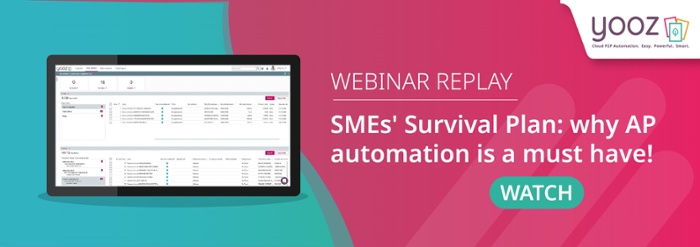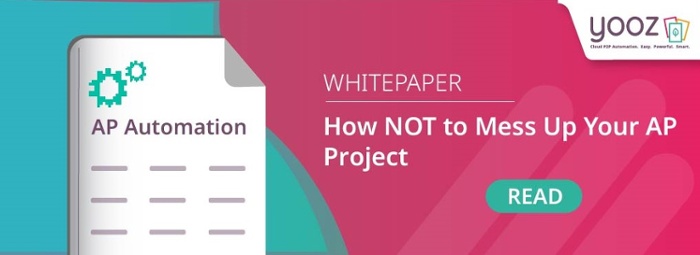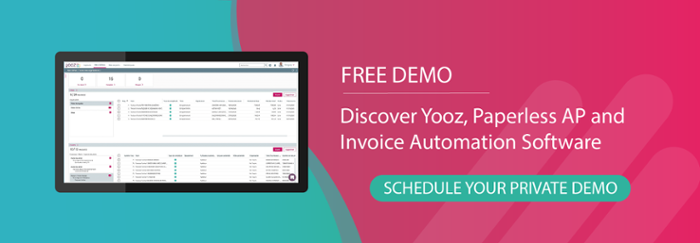When it comes to driving operations efficiencies and unleashing the full capabilities of your teams, technology plays a critical role. This is particularly true of solutions that empower teams to automate tasks on a significant scale.
The accounts payable function is a prime example of where embracing technology becomes of vital importance. Accounts payable software goes beyond mere time and cost savings, it acts as a catalyst for positive transformation along the entire accounts payable process.

From enhancing cashflow management and financial reporting to streamlining processing invoices and capitalizing on early payment discounts via suppliers, the technology impact is simply groundbreaking.
It's essential to realize that technology is only as efficient and effective as those using it. In fact, if you automate inefficient processes on a large case you can simply amplify issues rather than solutions.
Of course, technology is only as efficient and effective as those using it. If you automate poor processes, you'll simply end up with more issues at scale. This is why it's incredibly important to adhere to best practices; ensuring that any accounts payable function is not just automated but set up for continuous success.
Let's cover some of the accounts payable best practices for teams when choosing, implementing, and using a new accounts payable automation solution.
Enhanced best practices for software implementation
Embarking on an Accounts Payable (AP) automation journey involves a strategic approach across three crucial stages: before, during, and after implementation.
Employing specific best practices at each stage ensures a seamless transition and maximises the benefits of automation.
There are three stages to implementation: before, during, and after. Some stages have specific best practices, others cross over. Let's review each stage:

Phase I: Before implementation
1. Conduct supplier evaluations
Conducting a thorough evaluation of multiple suppliers is not simply about identifying quality options. It serves as a strategic initiative to identify the supplier relationships that align best with your organisation's needs and goals.
- Assess diverse AP solutions in the market to identify ideal suppliers.
- Prioritise service quality, integration smoothness, and ongoing support over mere technical capabilities.
- Collaborate with suppliers who are willing to customise their solutions according to your organisation's specific needs.
Questions to ask
|
These questions will help guide the organisation in the supplier evaluation process, ensuring that the selected suppliers not only meet technical requirements but also contribute to the organisation's broader strategic goals and any specific needs.
|
2. Obtain enterprise-wide buy-in
The Accounts Payable department typically champions a new AP automation solution in the organisation, with the IT teams ensuring the systems are compatible. However, involving other departments early in the process accelerates acceptance across the organisation, reduces reliance on any shadow IT (IT systems deployed by departments other than the central IT department to solve prominent business challenge), and encourages support for digitalisation.
- Extend the involvement beyond the AP department to encompass other departments and stakeholders who rely on AP functions.
- Address any potential shadow IT scenarios by engaging teams early and clearly presenting the benefits of the new AP software.
- Accelerate acceptance by aligning the new solution with the needs of IT, finance, and various other departments.
Questions to ask
|
These questions will help to promote a collaborative and inclusive approach to implementation of a new AP automation solution, helping to foster acceptance and support across the entire organisation.
|
3. Appoint a project manager and champion
Having a dedicated liaison with the AP software supplier - crucial during the implementation phase - ensures oversight of technical, training, and operational aspects. They act as an internal contact for different teams and, while the daily management rests with the AP department, the project manager ensures ongoing project success and optimisation (including routine checks and troubleshooting).
- Designate a project manager as the central point of contact both internally and externally.
- Ensure that the project manager oversees technical requirements, training, assigning costs, scheduling, and workflows.
Questions to ask
|
These questions help ensure that the appointment of a project manager is both strategic and comprehensive, covering both the initial implementation and the ongoing success of the AP software within the organisation.
|
Phase II: During and after implementation
1. Ensure seamless integration and technical support
Before initiating an accounts payable software implementation, it's crucial to ensure seamless integration with existing tools such as Enterprise Resource Planning (ERP) platforms, Customer Relationship Management (CRM) systems, or any other financial tools.
This helps to minimise errors, enhance data quality, eliminate duplication, and provides a comprehensive overview of financial operations, health, forecasting and much more.
- Confirm compatibiity with existing tools before initiating the implementation process.
- Prioritise end-to-end integration with ERP, CRM, and other financial tools to reduce the possibility of error and ensure correct data consolidation.
- Maintain access to technical support throughout the implementation phase for swift issue resolution.
Questions to ask
|
Asking these questions will help guide the organisations in ensuring a smooth integration process with ongoing technical support, both crucial for the success of the AP software implementation and the overall efficiency of financial operations.
|
2. Establish clear workflows and processes
Accounts payable software's primary advantage lies in automating tasks such as manual data entry, invoice processing, and payment approvals. It also helps to minimise errors in invoice data capture through the use of technologies like Optical Character Recognition (OCR).
However, while AP automation eliminates the need for paper invoices and duplicate payments, successful implementation requires careful consideration of existing workflows and processes.
This way, you'll be left with the most important aspects of your accounts payable processes, and a clear understanding of how to move invoices forward. Otherwise, you risk amplifying your problems rather than solving them.
- Leverage AP automation to eliminate repetitive tasks and enhance data accuracy.
- Evaluate and redefine workflows and processes before beginning implementation to align with automation capabilities.
- Ensure clarity on approval processes and policies to avoid complications arising from automation.
Questions to ask
|
Asking these questions will help guide optimisation of the software implementation process, strategically aligning it with existing processes and addressing any potential complications related to approval workflows.
|
Phase III: After implementation
1. Monitor supplier relationships
Accounts Payable Automation software provides real-time visibility into invoices, purchase orders, payments, and cash flow. This allows for informed decisions on contract renewals and early payment discounts. In addition, this visibility enhances vendor performance tracking, ensure contract compliance, fosters stronger relationships, improves negotiation leverage, and over time identifies new cost-cutting opportunities.
- Utilise AP automation software to stay informed about invoices, purchase orders, and payment statuses.
- Leverage real-time process visibility to track vendor performance, ensuring compliance with contractual agreements.
- Strengthen relationships with suppliers, negotiate effectively, and identify opportunities for cost reduction.
Questions to ask
|
The organisation should plan ahead to maximise the post-implementation benefits of the AP automation software, leveraging the new real-time insights for improved strategic decision-making and relationship management.
|
2. Leverage built-in analytics
Modern AP automation solutions such as netsuite offers advanced analytics and reporting capabilities, enabling in-depth analysis of invoice processing, budgets, spend, purchase orders, and other metrics. This in turn empowers data-driven decisions to reduce expenditure, optimise cash flow, access savings from suppliers, and establish a highly efficient AP function.
- Capitalise on advanced analytics and reporting features inherent in modern AP automation solutions. For example, YoozReports offers the capability to update existing analytics and reports with a single click, directly from the Excel taskbar.
- Analyse invoice processing, budgets, spend patterns, and purchase orders to obtain actionable insights.
- Make data-driven decisions to optimise cash flow, reduce expenditure, and enhance over AP process efficiency.
Questions to ask
|
Answering these questions should help guide an organisation in effective use of the advanced analytics and reporting capabilities offered by the AP automation solution to achieve organisational goals.
|
By adhering to thee refined best practices, organisations can navigate the complexities of AP automation implementation successful. This will help ensure a streamlined process and long-term efficiency gains.
Unlock your potential for change today
Discover the benefits of Purchase-to-Pay (P2P) automation with our cutting-edge cloud-based solution - the ideal blend of intelligence, power, and simplicity. Trusted by over 5,000 clients and 300,000 users worldwide, the Yooz platform ensures unparallled savings, agility, and security.
Our distinctive approach harnesses the power of Artificial Intelligence (AI) and Robotic Process Automation (RPA) technologies, providing a seamless, customisable, and traceable automation experience. Boasting over 250 native connectors, our solution seamlessly integrates with more information systems and ERPs than any other solution on the market today.
However, more than just technology, Yooz understands the intricacies of AP processing, offering expertise to enhance efficiency and effectiveness in any size organisation. Our dedicated team of experts is ready to support your accounts payable team in every facet of your automation journey, from before implementation to ongoing optimisation.
Ready to elevate your AP automation game? Reach out today!











